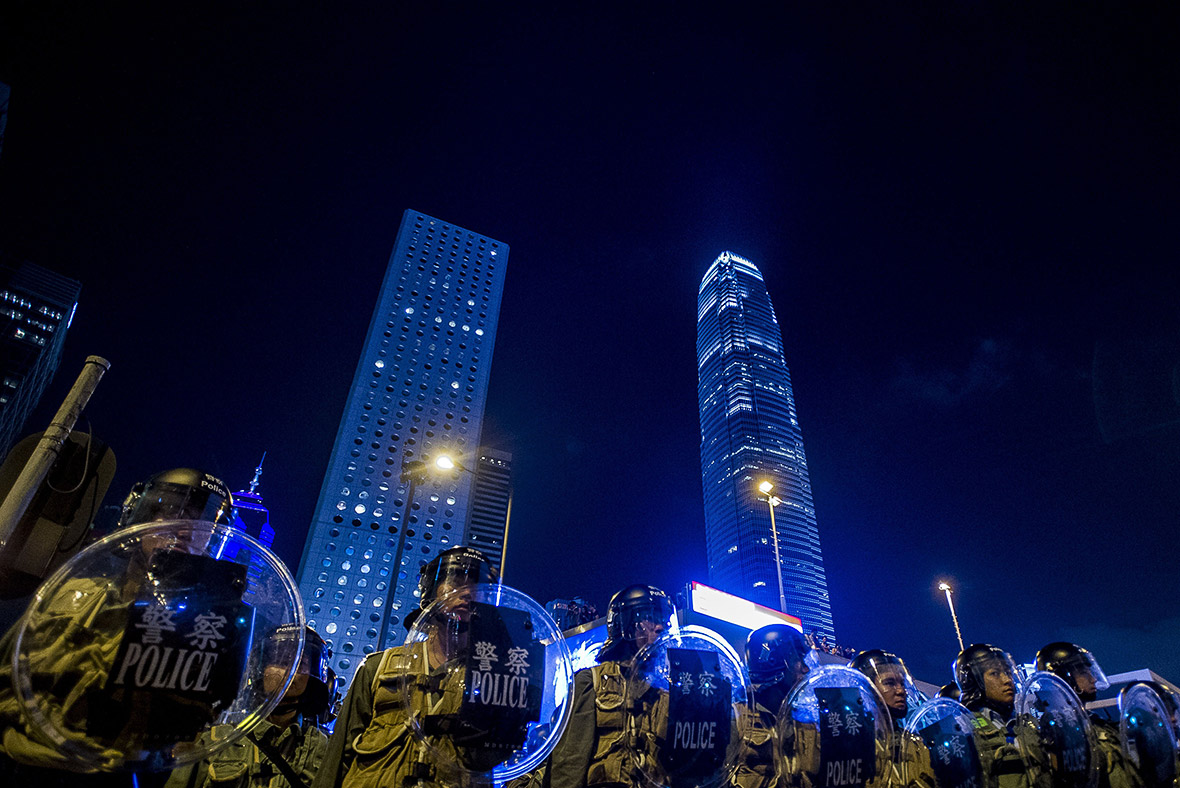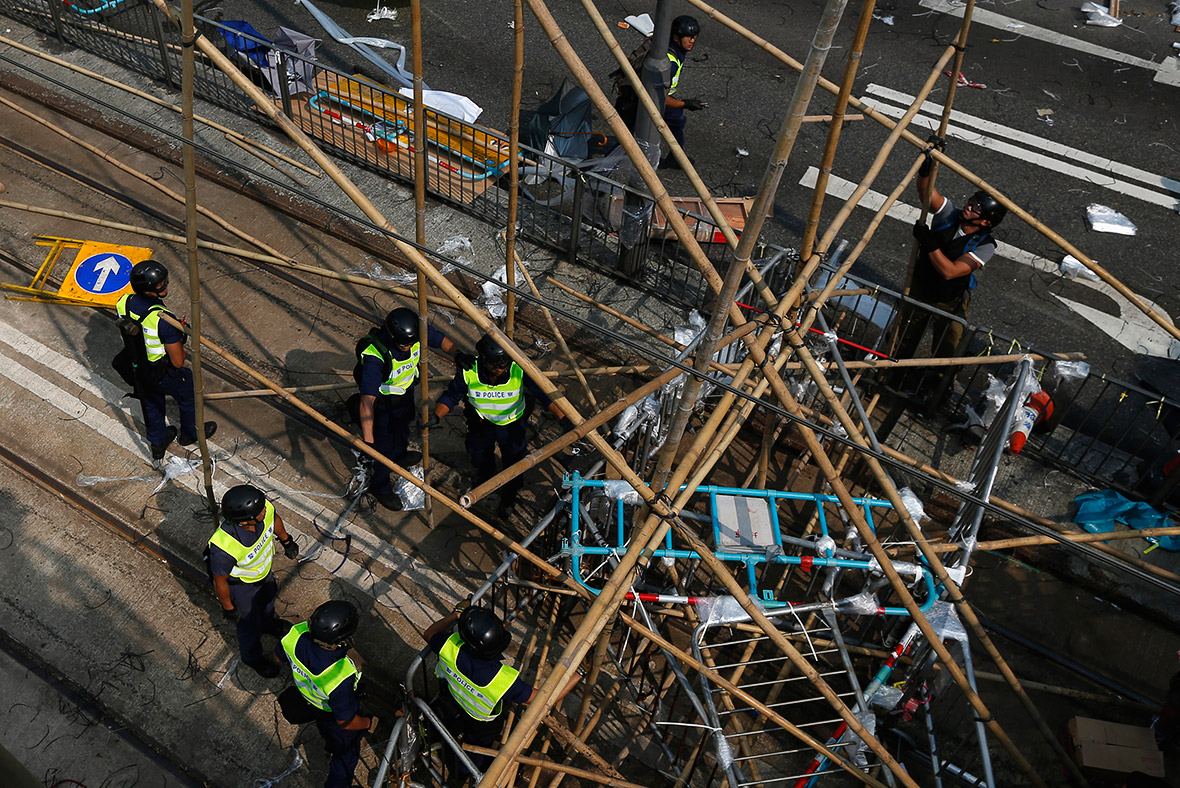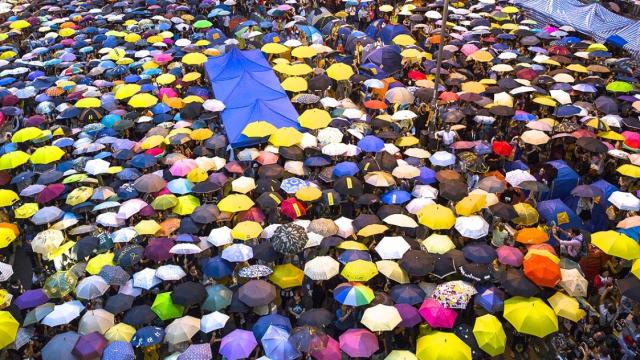








































One year ago, Hong Kong's streets were shut down by pro-democracy activists who occupied them for 79 days in what became known as the "Umbrella Movement." The protests were led by students and other activists who took to the streets to voice their opposition to Beijing's plan to restrict elections for the leader of the semi-autonomous Chinese city.
The protest was kicked off by students, led by Joshua Wong, who stormed into the government headquarters compound on 26 September. They were promptly arrested by the police. Two days later tens of thousands of supporters flooded onto a major highway in Hong Kong, blocking traffic, and stayed there despite police firing 87 rounds of tear gas in one day.
While largely peaceful, the size and duration of the protests – and the fact that they took place in full view of international media, who filmed the activists using umbrellas to defend themselves against police tear gas, pepper spray and batons – raised a serious challenge to China's Communist Party. The movement fizzled out as the government stuck to a hard line and authorities eventually cleared out all three protest camps.
As the Los Angeles Times reports:
"Much as the protests transfixed the world, they yielded no concessions from the local government in this semi-autonomous Chinese territory, or from Communist Party rulers in Beijing. Many of those who participated fell into a deep despondency; Wong himself called the mass movement 'a failure' that has plunged many a participant into 'an abyss of helplessness."
"He was in the crowd Monday evening as nearly 10,000 pro-democracy supporters regrouped in central Hong Kong to mark the one-year anniversary, many unfurling yellow umbrellas and chanting: 'Hong Kong won’t be the same again. Democracy defies gas bombs.'"
Here's a look back at 2014's Hong Kong Umbrella Movement pro-democracy protests in 40 powerful photos.








































Ending fascists’ grip on power not only requires voting them out, but replacing them with the right people.
Gerontocracy endangers democracy.
One pressing question is how the worldwide outrage might, and could, spread to his other business interests, not least his largest interest: SpaceX.
There is a real human cost behind cold, calculated “efficiency.”
Musk's unelected role at the forefront of U.S. government, and his company's near monopolisation of satellite internet communications, increases his global political and economic power grab, and attacks on democracy.
They’ve defied our courts, deported Americans, disappeared people off the streets, attacked our civil rights, and slashed our services. The corruption has gone too. far. No thrones. No crowns. No kings.
A rug pull occurs when a ‘meme’ or ‘shit’ coin is created, investors pour in, and the price spikes — at which point the early stakeholders sell and tank the coin’s value, as happened with the $TRUMP token.
Ending fascists’ grip on power not only requires voting them out, but replacing them with the right people.
Gerontocracy endangers democracy.
One pressing question is how the worldwide outrage might, and could, spread to his other business interests, not least his largest interest: SpaceX.
Yarvin saw the “red pill” as the realization that the Enlightenment ideals he came to associate with “the cathedral” and democracy are actually a poison leading to societal decadence and decline.
As the American public continues to publicly stand up to the administration, Trump’s grip on power will eventually slip.
It is clear that authoritarian fascists, in the United States and elsewhere, do not want education that promotes critical thinking.
Musk's unelected role at the forefront of U.S. government, and his company's near monopolisation of satellite internet communications, increases his global political and economic power grab, and attacks on democracy.
There is a real human cost behind cold, calculated “efficiency.”
Musk's unelected role at the forefront of U.S. government, and his company's near monopolisation of satellite internet communications, increases his global political and economic power grab, and attacks on democracy.
There is a real human cost behind cold, calculated “efficiency.”